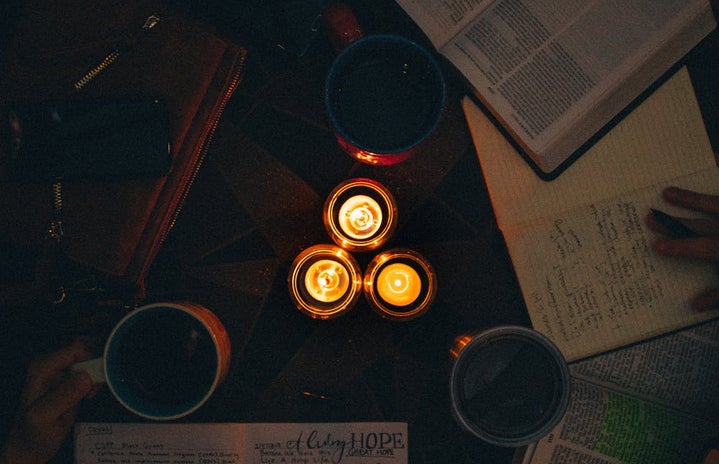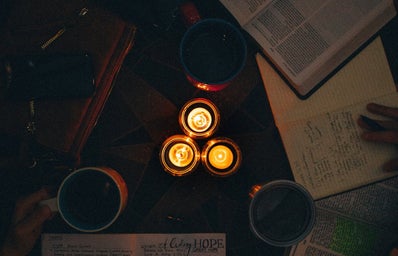Dark academia is a literary and aesthetic genre that’s been gaining popularity in recent years, particularly among young readers on the internet. The trend is characterized by themes such as academic pursuits, intellectualism, and the pursuit of knowledge, often set against a backdrop of gothic architecture, ivy-covered buildings, and autumnal landscapes. Historically sought questions of classical literature and philosophy and the idea of the human condition are in vogue as a result of the popularity of this trope in literature. The aesthetic of the vintage wardrobe and leather-bound books shelves and the nostalgia of a bygone era, in fact, the act of reading itself, has been rendered a certain air of ‘coolness’.
One of the most interesting aspects of dark academia is its ability to blend elements of mystery, romance, and tragedy, creating stories that are captivating as well as indulge in the darker aspects of the human faculty. Here are some of the books that I feel truly capture the essence of dark academia in all its colorful multitudes.
1. ‘Babel’ by R. F. Kuang
Babel follows the story of Robin Swift, who is orphaned by cholera in Canton and brought to London by the mysterious Professor Lovell. Under the care of the Professor, Robin trains for years in Latin, Ancient Greek, and Chinese, all in preparation for the day he will enroll in Oxford University’s prestigious program, The Royal Institute of Translation, also known as Babel. Babel and its students are the world’s center for translation and, more importantly, magic. Silver-working- the art of manifesting on silver bars the meaning that is lost in the act of translation- has made the British unparalleled in power and wealth.
For Robin, Oxford is a utopia after Canton and Oxford has blessed him with the riches of knowledge. But knowledge obeys power, and as a Chinese boy raised in Britain, Robin realizes serving Babel means betraying his motherland. When Britain pursues an unjust war with China over silver and opium, Robin is faced with a dilemma, a crisis of faith and he must decide whether he wants to remain in the confines of the shelter offered to him or must revolution always be procured with violence.
2. ‘Bunny’ by Mona Awad
At its core, Bunny follows the journey of Samantha Heather Mackey, a literature student at an elite New England university. Samantha finds herself entangled in a clique of privileged, eccentric classmates who share the strange habit of calling each other “Bunny.” These classmates of hers seem to inhabit a world of their own making, with bizarre rituals and an otherworldly sense of camaraderie. As Samantha is drawn into their private circle of friendship, she finds herself in a world of twisted lies and peculiar rules. As the lines between reality and fantasy blur for her, she is left to navigate her life around the complexities of female ambition, social identity, and friendship.
Mona Awad manages to explore themes of conformity and desire, how the two play into each other, and the pressures that can be built on you as you grow older and have to build a future for yourself. “Bunny” is a dark satirical take on academic circles and cliques and the things you are willing to do to find a place for yourself in this world. At times, it can get unsettling in its persistence of the bizarre, the queer side of human nature.
Bunny is a twisted and thought-provoking novel that defies categorization. It’s equal parts hilarious and disturbing, with a narrative that will linger in your mind long after you’ve finished reading.
3. ‘Maurice’ by E. M. Forster
This story, set in early 20th-century England, follows the journey of Maurice Hall, a young man coming to terms with his sexuality in a society that doesn’t accept same-sex love. The novel beautifully captures Maurice’s internal struggle as he grapples with his identity in terms of his desires and what he wants for himself in life. The plot unfolds as Maurice navigates his experiences of heartbreak and disappointment alongside moments of rich joy.
At its core, Forster is writing a love story, but it’s also a poignant exploration of societal norms and the constraints that are placed on individuals. Maurice’s journey takes him from the confines of a rigid society to the path of self-acceptance, guided by deeply introspective experiences, Forster’s prose is lyrical and evocative, drawing readers into Maurice’s world and inviting them to empathize with his struggles.
The book is rife with notions of yearning and strengthened by ideals of resilience and self-discovery as Maurice Hall learns to find happiness on his terms. It’s a timeless classic, a beautifully written tale of romance filled with so much heart!
4. ‘Sleepwalking’ by Meg Wolitzer
Sleepwalking tells the story of the three notorious ‘death girls,’ so-called on the Swarthmore campus because they dress in black and are each absorbed in the work and suicide of three different poets: Sylvia Plath, Anne Sexton, and Wolitzer’s creation, Lucy Asher, a gifted writer who drowned herself at twenty-four. But an affair with Julian, an upperclassman, pushes one of the trio- sensitive little Claire Danziger– spiraling into the deep end. Claire starts asking herself to what degree her ‘death girl’ identity is true to who she is. As she grapples with her feelings for Julian, her understanding of herself and her past begins to shift uncomfortably.
In Sleepwalking, Wolitzer takes us into the inner workings of this elite boarding school, where the characters are grappling with their demons while navigating the pressures of academia and social hierarchies. There’s an intensity to the relationships between the students and the faculty, with secrets bubbling just beneath the surface. The characters, primarily the students at the boarding school, are grappling with questions of who they are and where they fit in the world. They’re navigating the complexities of adolescence and trying to carve out their paths amidst the expectations of society and their families. Sleepwalking talks of the pursuit of intellectual enlightenment, often at the expense of personal relationships and moral boundaries. It offers a thought-provoking exploration of the human experience.
5. ‘Carmilla’ by Joseph Thomas Sheridan Le Fanu
Picture this: it’s the early nineteenth century in Styria, Austria. We’ve got this young woman named Laura living in a secluded castle with her father. Everything seems pretty normal until this mysterious and captivating girl named Carmilla enters the scene. Carmilla’s alluring, beautiful, and bewitching. Strange things start happening around the castle, and Laura begins to suspect that Carmilla might not be who she claims to be.
As the story unfolds, Laura finds herself drawn to Carmilla in a way that’s both irresistible and terrifying. It’s a tale of forbidden desires, knowing you shouldn’t want something but unable to deprive yourself of it just the same. Le Fanu weaves together themes of sexuality, mortality, and the supernatural in a way that keeps you on the edge of your seat.
Carmilla is often considered one of the earliest works of vampire fiction, predating even Bram Stoker’s Dracula, and it has had a significant influence on the vampire genre as a whole. This is one of the easiest classics to get into if you are a novice and want something to ease you into your journey of reading more classical work.
6. ‘Brideshead Revisited’ by Evelyn Waugh
The protagonist of this novel, Charles Ryder, is a young aspiring artist from a middle-class background. He meets the charming and charismatic Sebastian Flyte, who comes from a wealthy, aristocratic family. Sebastian takes Charles under his wing and introduces him to the lavish lifestyle of the Flyte family at their estate, Brideshead. But things aren’t all rosy. Turbulent tensions are unfolding within the Flyte family, with conflicts stemming from religion, duty, and societal expectations.
As Sebastian struggles with his inner demons, Charles finds himself drawn to Sebastian’s sister, Julia, leading to a very complicated and messy love affair. Waugh weaves in themes of nostalgia, faith, and the decline of the aristocracy in post-war Britain, adding layers of depth to the narrative. It’s a captivating exploration of love, friendship, and the complexities of human relationships set against the backdrop of a changing world.
If you are into dark academia, I hope my list of favorites helps you with your next read!


